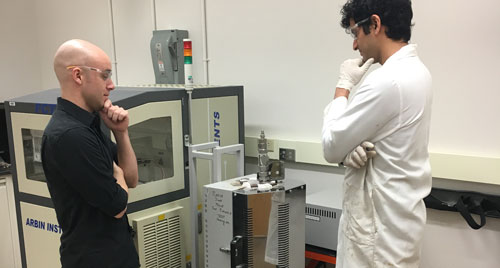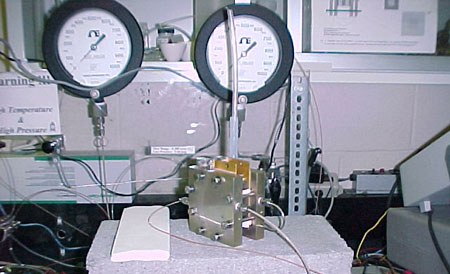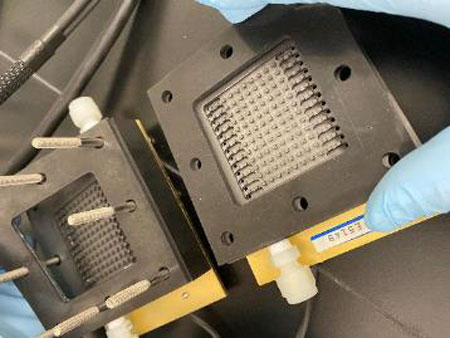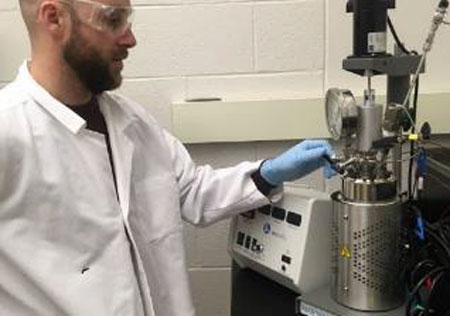High-Temperature Zetameter
This is used for measurements of electrophoretic mobility and zeta potential of particulate materials in high-temperature solutions. The available instruments work at temperatures up to 250 °C and pressures up to 20 MPa. Samples with the particle size 0.1-1 micron can be studied.
Conductivity Measurements
Several electrochemical cells are available to test the in-plane and through-plane ionic conductivity of membrane materials:
- BekkTech cell for in-plane measurements in gas phase with variable relative humidity
- Cell designed for testing inorganic conductors (pellets) in gas phase with variable relative humidity
- Clip cell for through-plane measurements in solution phase
CuCl Electrolyzer
This was developed to study the performance of various membrane materials and MEAs for hydrogen gas production from electrolysis of CuCl+HCl solutions. The system is designed to work with highly concentrated solutions up to 80 °C. Measured characteristics include current-potential polarization curves, open circuit potentials, EIS, and H2 production rates.






